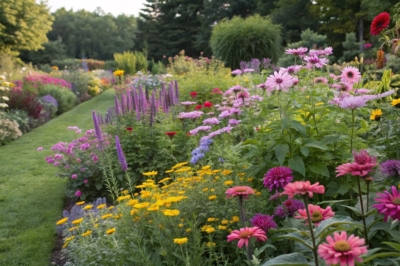1. Variety of Plants

Mixing a variety of plants adds texture and intrigue. I once combined ferns with foxgloves, and the result was simply enchanting.
A few choices to try:
- Perennial Flower Seed Mix: Enhance your garden’s beauty with a diverse mix of perennial flower seeds for lasting blooms.
- Decorative Garden Ferns: Add lush greenery to your garden with decorative fern plants that thrive in various climates.
- Foxglove Plants: Introduce striking vertical interest with foxglove plants, perfect for adding height and color.
2. Cottage Garden Charm
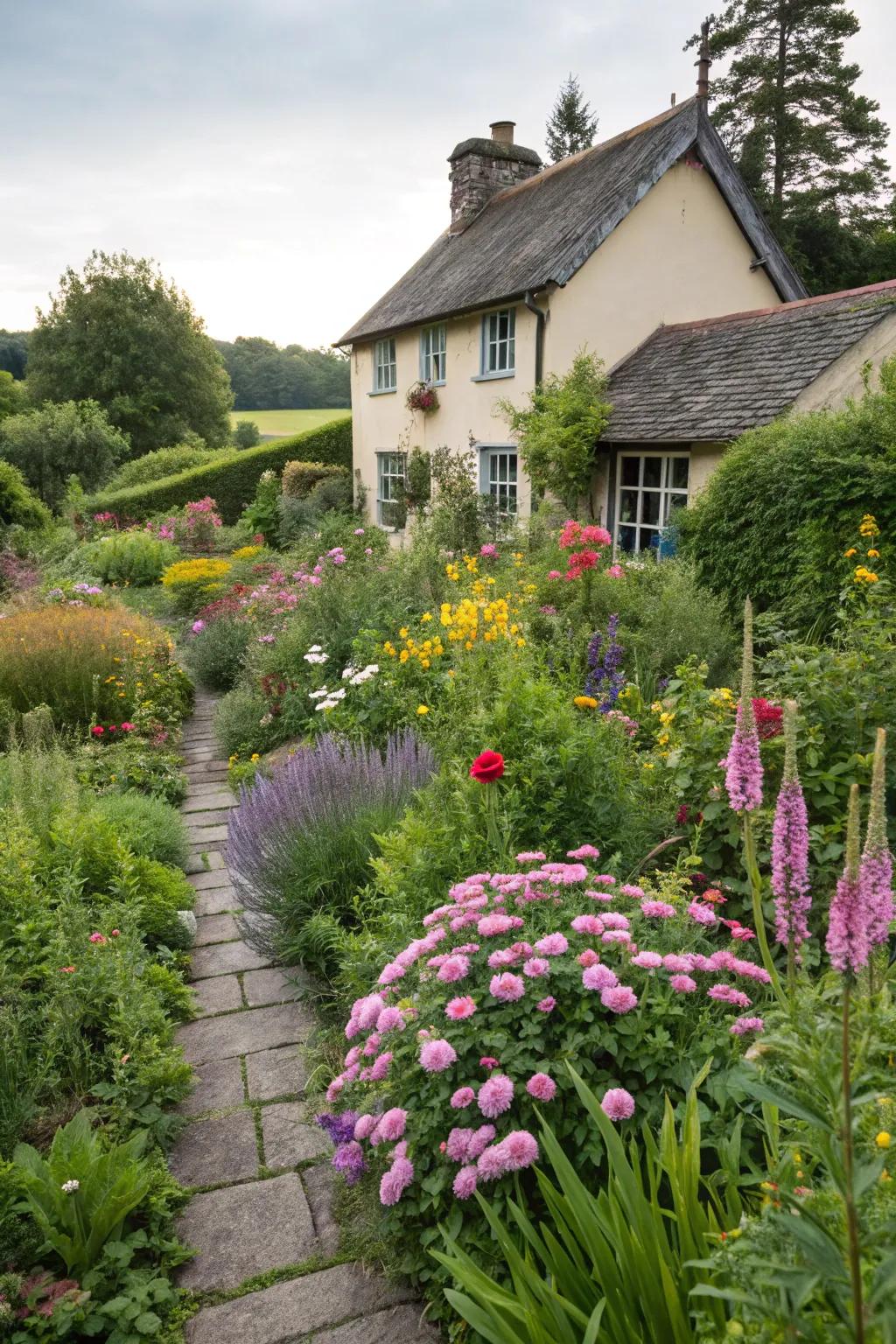
Capture cottage garden charm with an informal layout of blooms. I adore the spontaneous feel of a garden that’s slightly wild yet welcoming.
These products might help:
- Perennial Flower Seed Mix: Create a lush, colorful garden effortlessly with this easy-to-grow perennial flower seed mix.
- Rustic Garden Pathway Stones: Enhance your garden’s charm with rustic pathway stones for an inviting cottage-style aesthetic.
- Decorative Iron Garden Edging: Define your garden spaces beautifully with decorative iron edging, adding timeless appeal.
3. Garden Pathways
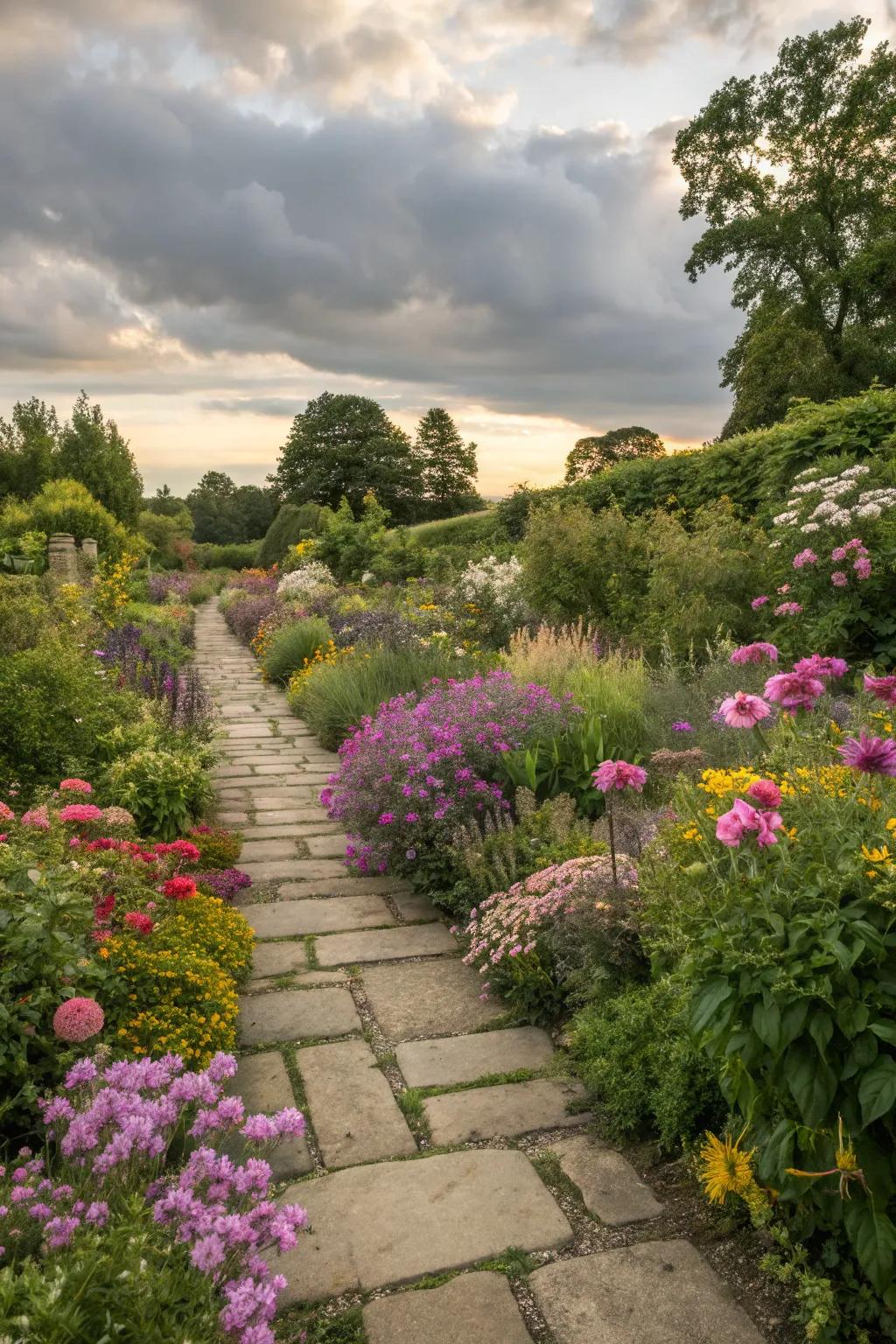
Add charm with garden pathways that guide you through your floral haven. I love using stone paths that meander through blooms, adding whimsy.
Give these a look:
- Stone Garden Pathway Pavers: Enhance your garden with durable stone pavers, creating a picturesque path through your blooms.
- Solar Garden Pathway Lights: Illuminate your garden path with eco-friendly solar lights, adding charm and safety at night.
- Garden Pathway Edging: Define your garden path beautifully with stylish edging that keeps your design neat and tidy.
4. Lighting for Dramatic Effect
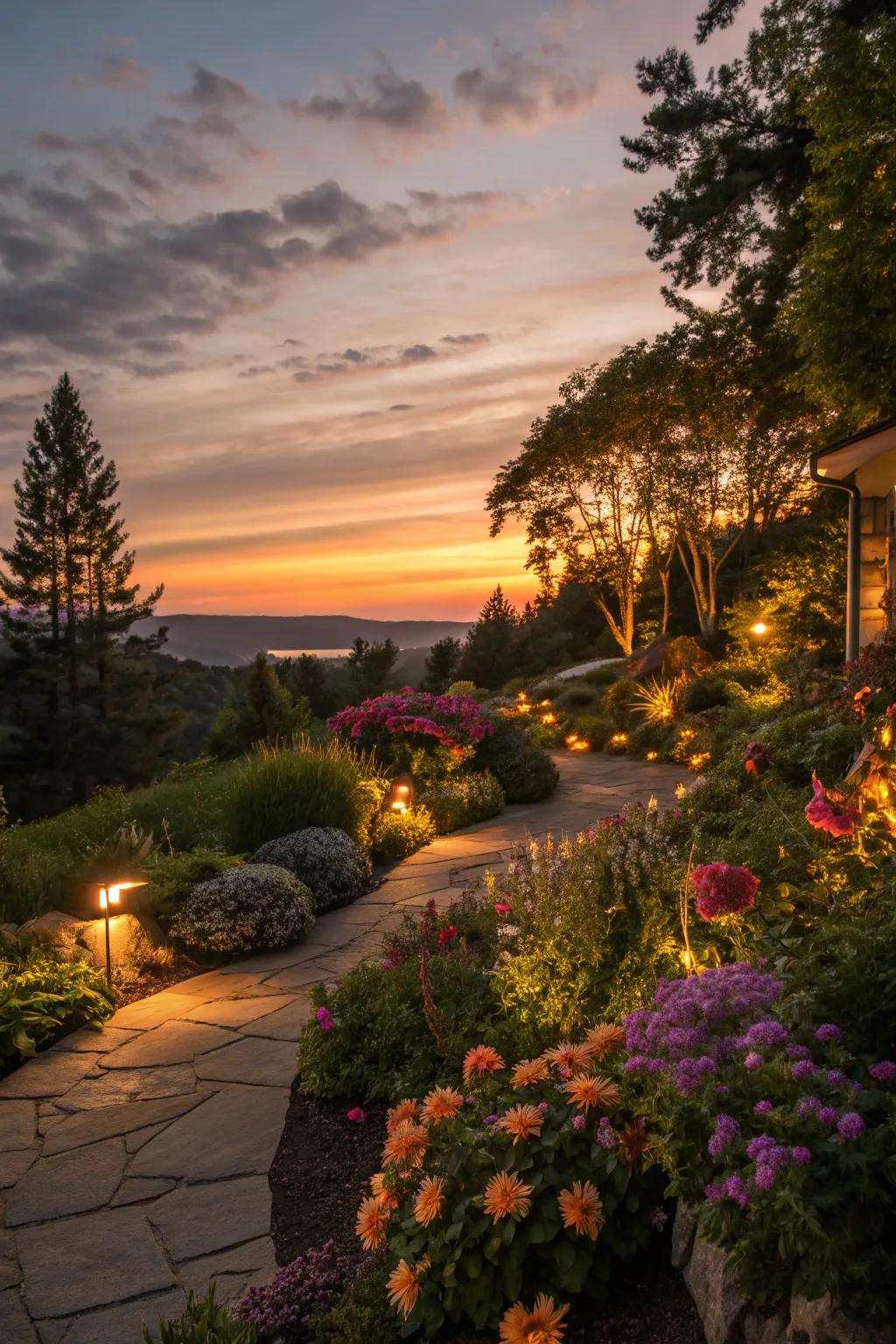
Use strategic lighting for dramatic effect at sunset. Uplighting your favorite plants creates a magical, evening garden allure.
Some ideas to consider:
- Solar Garden Pathway Lights: Illuminate your pathways effortlessly with solar lights and create a captivating evening atmosphere.
- LED Uplights for Garden: Highlight your favorite plants with energy-efficient LED uplights for a stunning night-time view.
- Weatherproof Spotlight Fixtures: Use weatherproof spotlights to emphasize garden features and add drama to your evenings.
5. Real Garden Examples
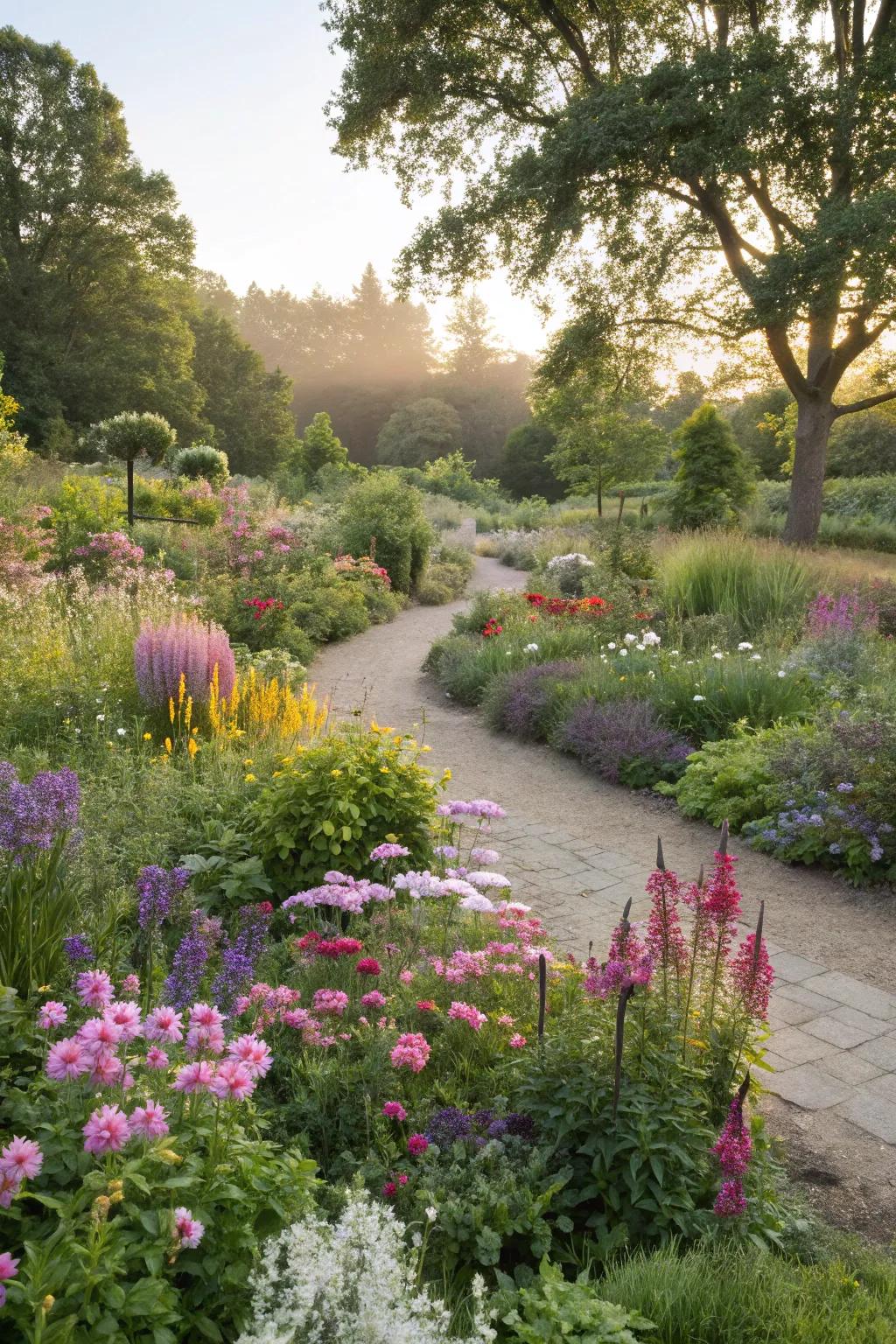
Take inspiration from real garden examples around you. Visiting a local garden transformed my perspective on plant placement.
You might give these a try:
- Perennial Flower Seeds Mix: Transform your garden with a mix of vibrant, long-lasting perennial flowers today!
- Garden Pathway Pavers: Enhance your garden’s charm with easy-to-install pathway pavers. Create a beautiful stroll today!
- Decorative Garden Borders: Define your flower beds with stylish garden borders. Elevate your garden’s design instantly!
6. Zen Garden Influences
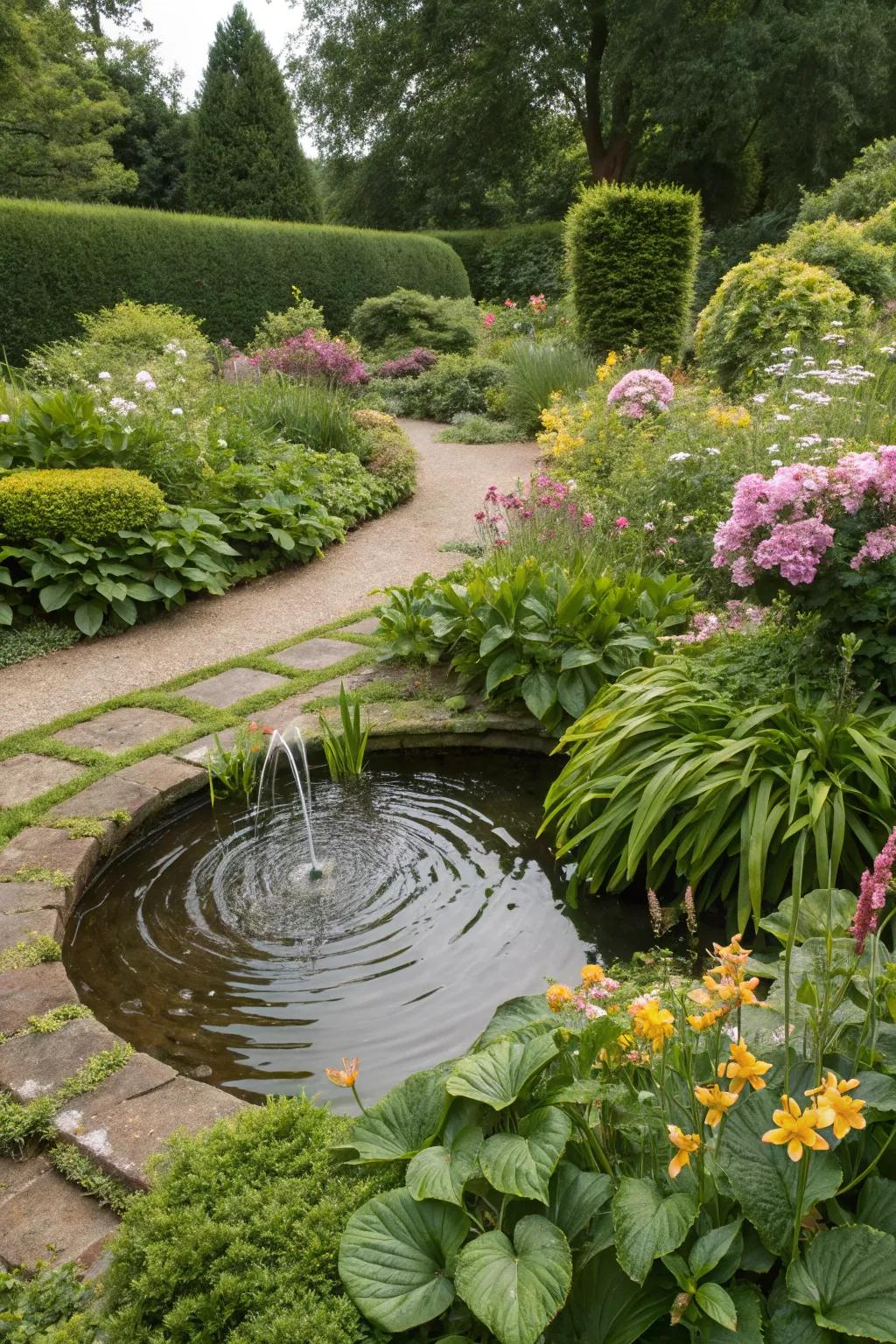
Infuse Zen garden influences with tranquil water features. The soothing sound of water trickling complements the vibrant flowers perfectly.
Items that may come in handy:
- Outdoor Water Fountain: Transform your garden with a calming water fountain to enhance tranquility and visual appeal.
- Solar Water Pump Kit: Enhance your pond with an eco-friendly solar pump, adding gentle water sounds to your garden.
- Garden Pathway Stones: Create a serene garden pathway that complements the natural flow of your Zen-inspired space.
7. Layering Techniques
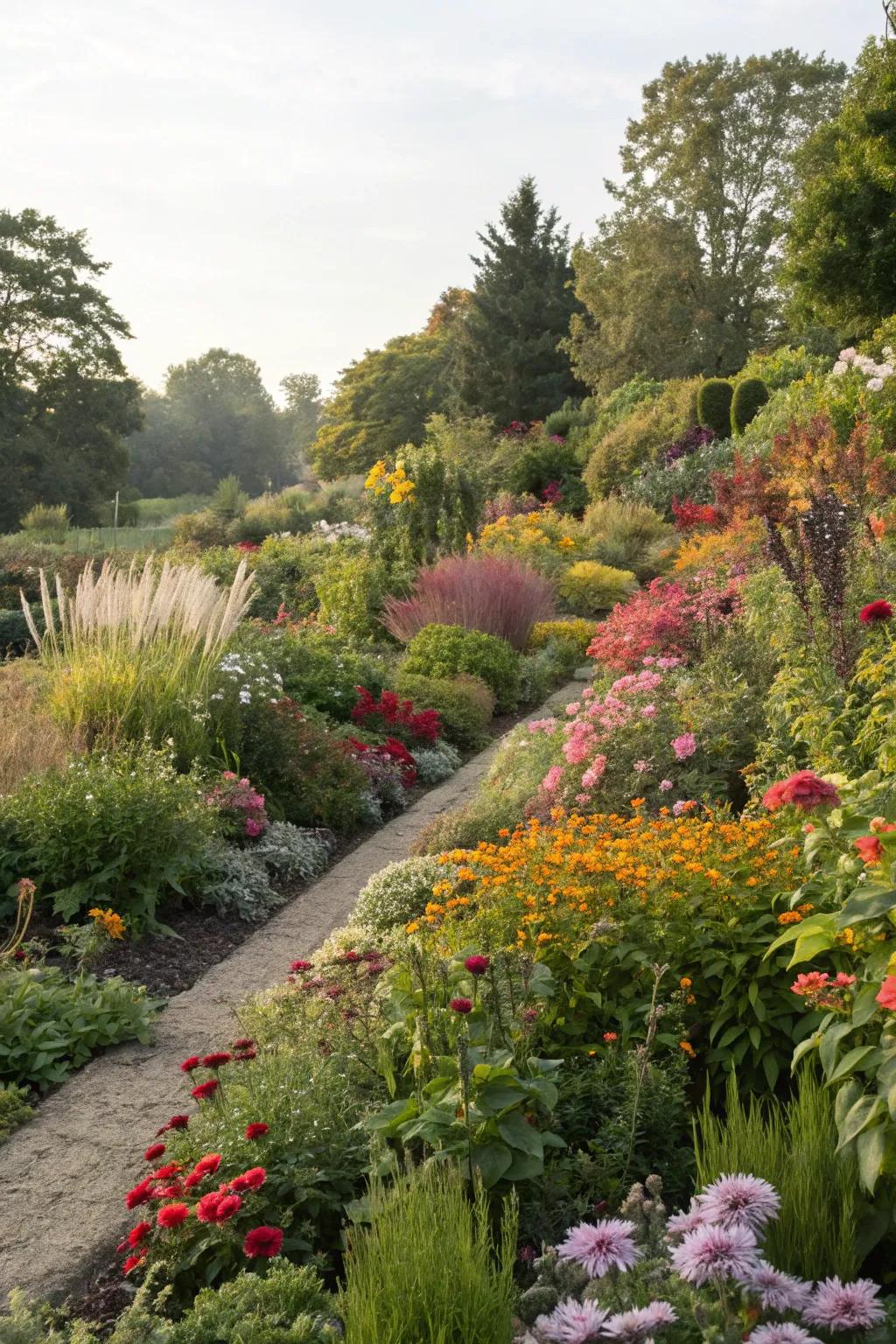
Master layering techniques by aligning plants with varying bloom times. This keeps your garden colorful throughout the seasons.
These products might be useful:
- Perennial Flower Bulbs Assortment: Elevate your garden’s charm with diverse blooms throughout the seasons. Start layering now!
- Adjustable Plant Support Stakes: Support your blooming layers with sturdy, adjustable stakes for a thriving garden display.
- Garden Fertilizer for Perennials: Boost your plants’ health and blooms with targeted nutrients for year-round vibrancy.
8. Seasonal Considerations
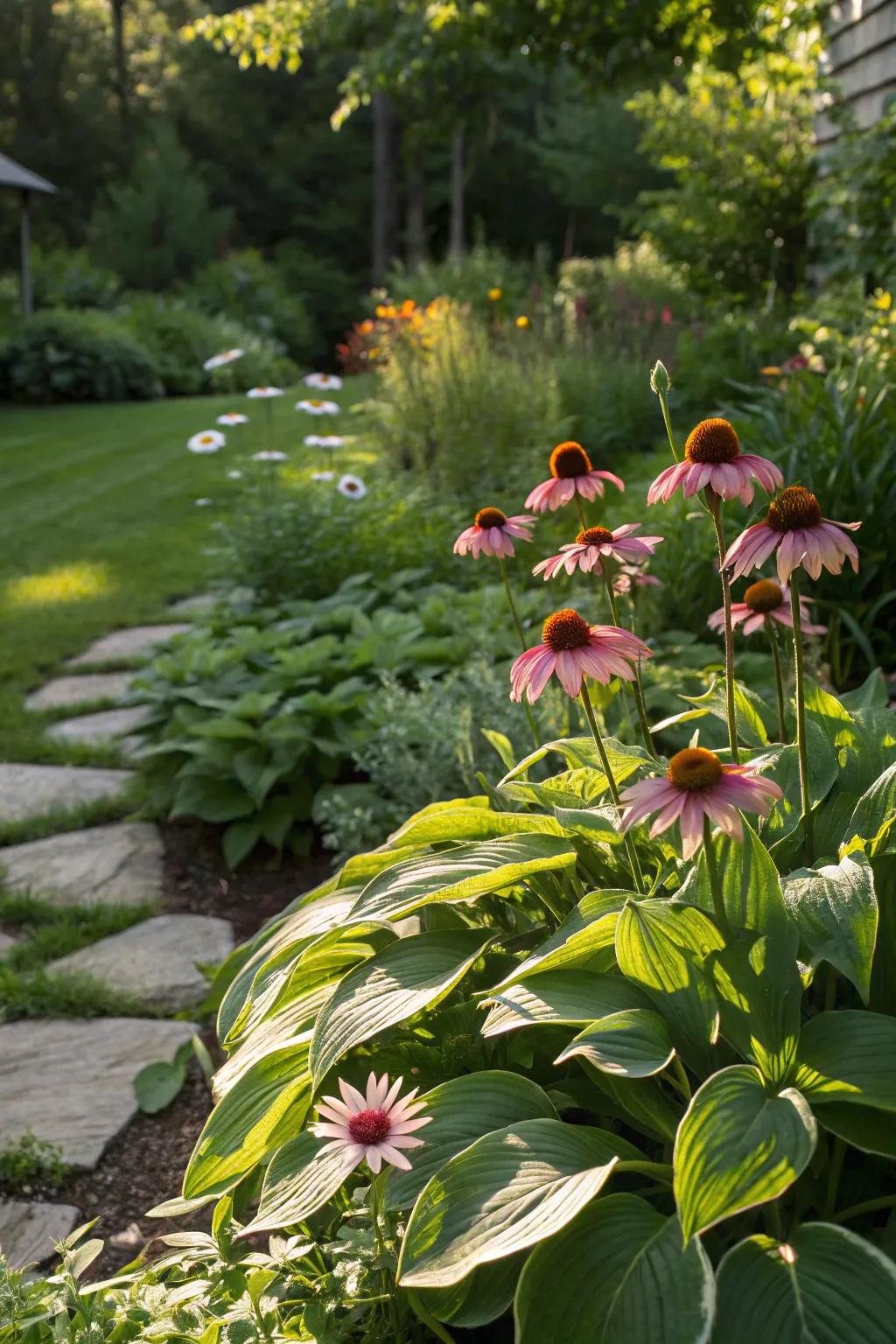
Plan your garden with seasonal considerations in mind. My garden thrives with sun-loving coneflowers in summer, balanced by shade-loving hostas.
A few suggestions:
- Solar Garden Lights: Illuminate your garden with stylish solar lights that enhance beauty and safety all year round.
- Perennial Flower Seeds Variety Pack: Diversify your garden by planting a variety of easy-to-grow perennial flower seeds and enjoy blooms every season.
- Garden Kneeling Pad: Make planting and weeding comfortable with a durable garden kneeling pad that protects your knees.
9. Play with Textures
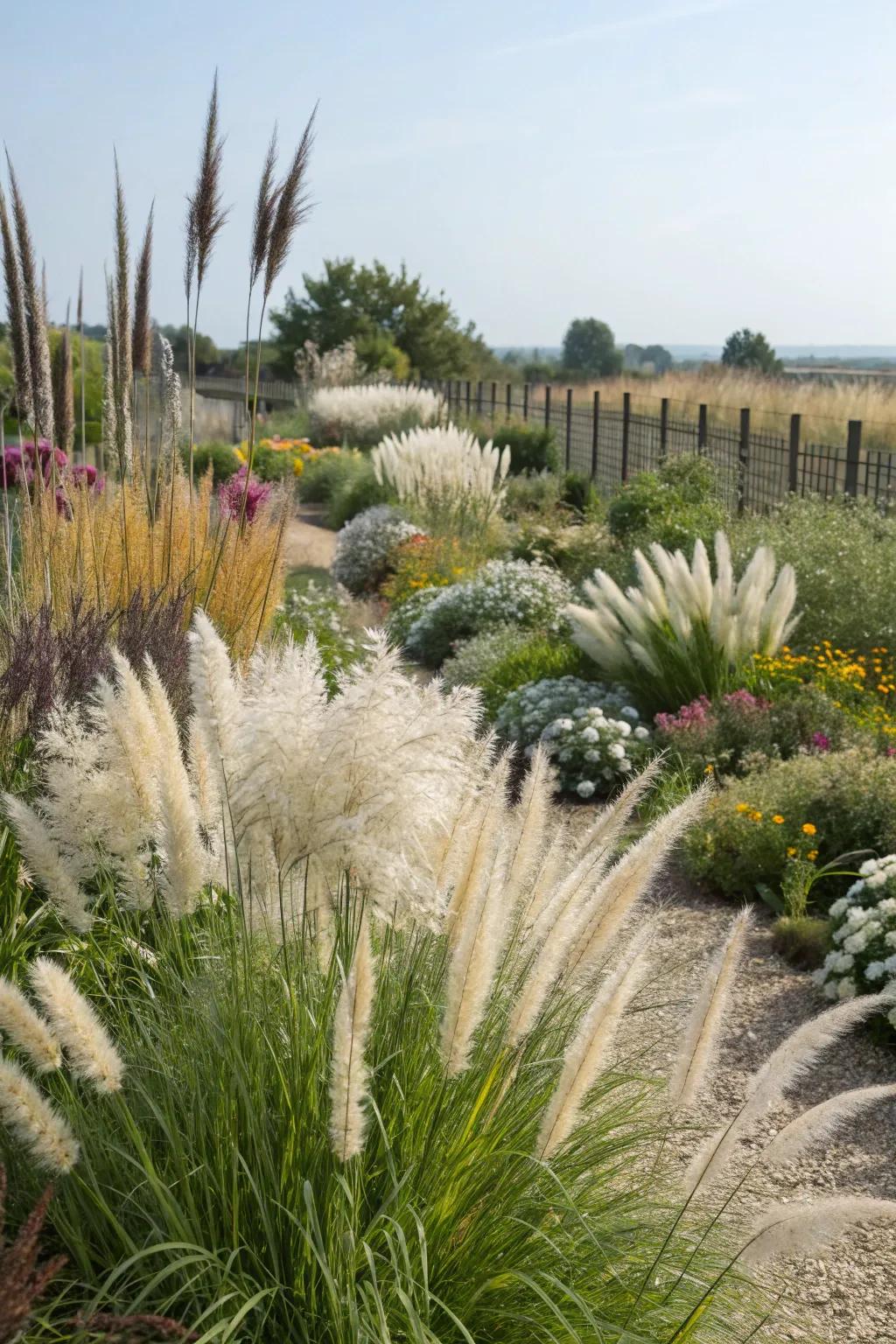
Play with textures by combining soft and spiky foliage. It’s a delightful contrast that adds depth to your garden design.
Try these:
- Soft Decorative Grass: Enhance your garden with soft, flowing grasses that add gentle, elegant movement year-round.
- Spiky Foliage Plants: Create striking contrasts with spiky foliage plants, adding dynamic structure to your garden design.
- Perennial Flower Collection: Brighten your garden with a mix of colorful perennial flowers, perfect for lasting seasonal beauty.
10. Educational Elements
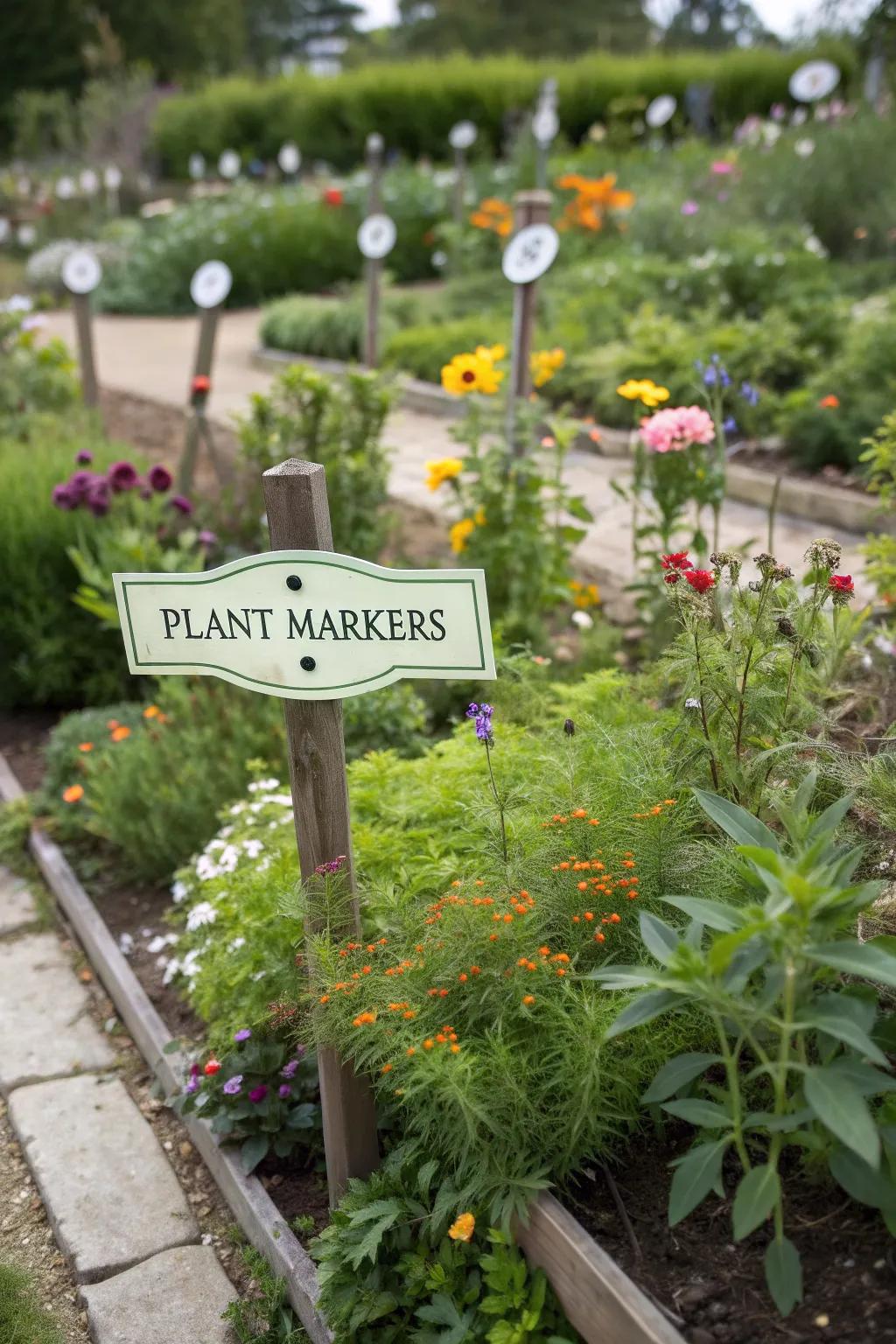
Incorporate educational elements like plant labels for a learning experience. It’s a fun way to engage guests and expand your gardening knowledge.
Possibly helpful picks:
- Garden Plant Labels: Enhance your garden’s learning experience with durable plant labels for easy plant identification.
- Botanical Marker Set: Educate visitors with a stylish botanical marker set, perfect for labeling various plants in your garden.
- Educational Plant Signs: Create an interactive garden space with educational plant signs for an enriching learning adventure.
11. Wildlife-Friendly Designs
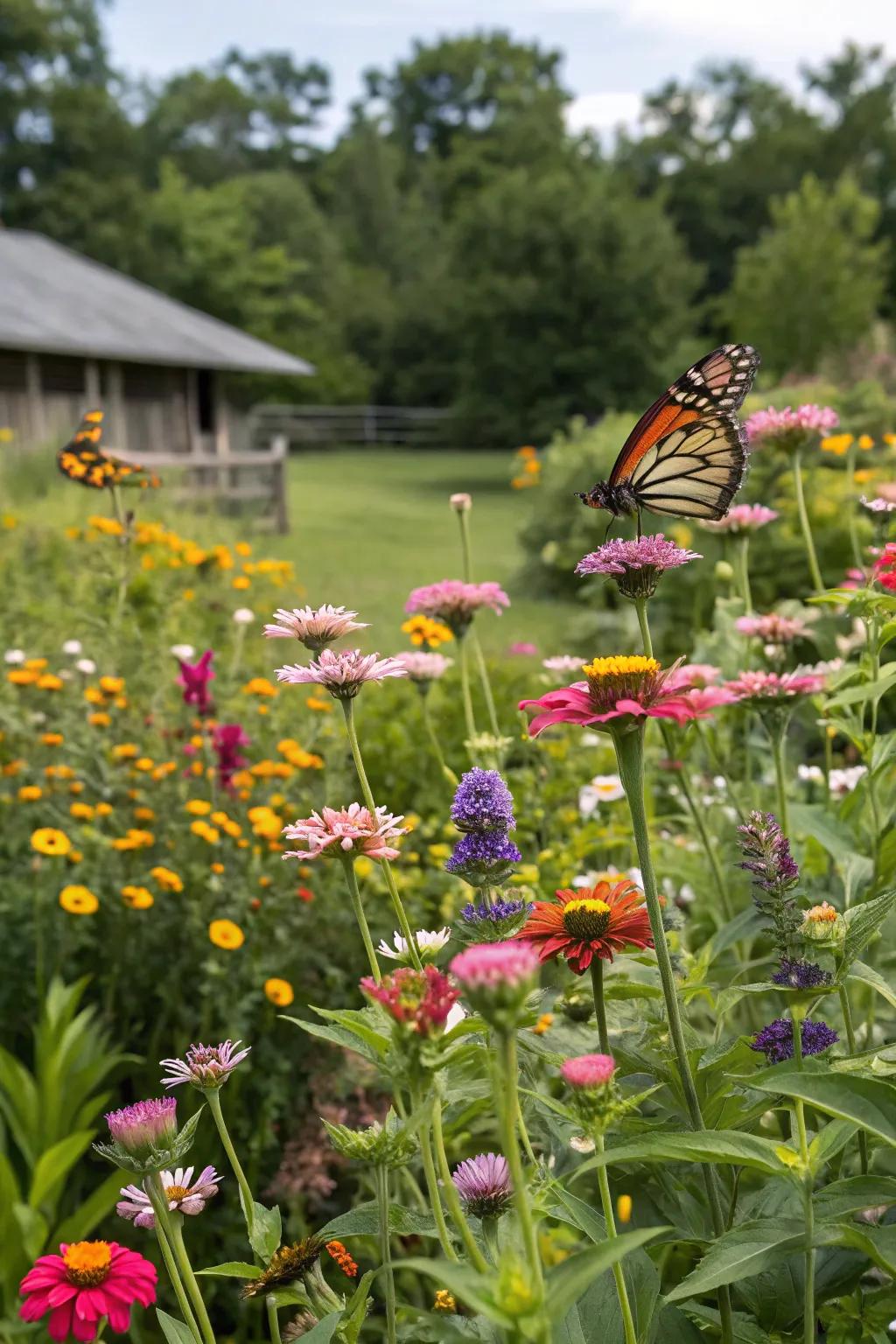
Design a wildlife-friendly garden by incorporating native plants. It’s a joy to watch butterflies and bees dance among the flowers.
A few relevant products:
- Native Wildflower Seed Mix: Plant a vibrant wildflower seed mix and attract more butterflies and bees to your garden.
- Bee and Butterfly Feeder: Install a bee and butterfly feeder to provide nourishment and enhance your garden’s wildlife appeal.
- Pollinator-Friendly Perennial Plants: Incorporate perennial plants to ensure continuous blooms and support local pollinators year-round.
12. Bold Focal Points
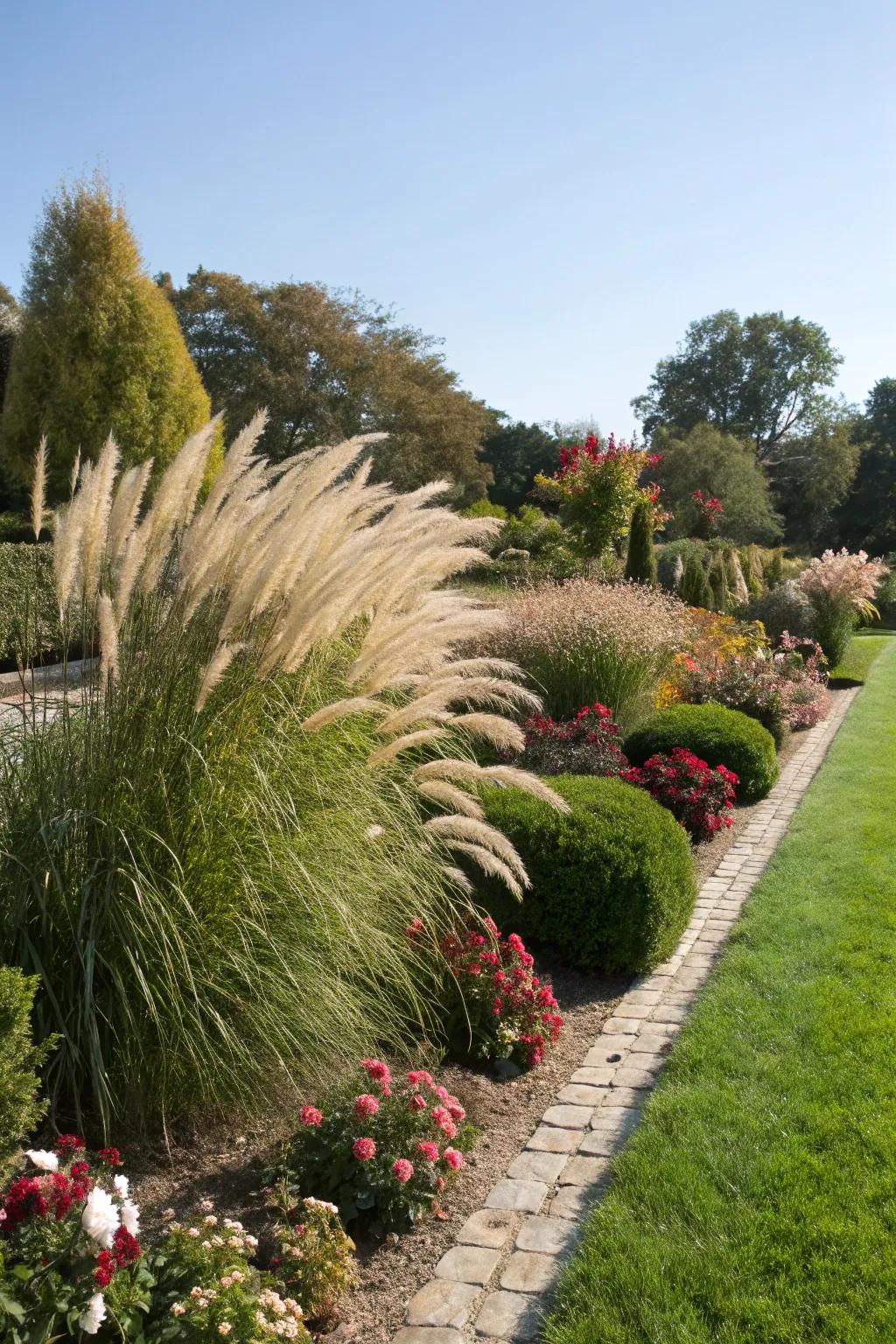
Create bold focal points with large statement plants. My garden’s centerpiece is a majestic ornamental grass that sways gracefully in the breeze.
A few helpful options:
- Ornamental Grass Seeds: Transform your garden with elegant swaying grasses; perfect for creating dynamic focal points.
- Garden Pathway Edging: Define your garden with stylish edging, enhancing both aesthetics and structure.
- Perennial Flower Plant Mix: Add lasting beauty to your garden with vibrant perennial flower mixes for every season.
13. Mixing Heights
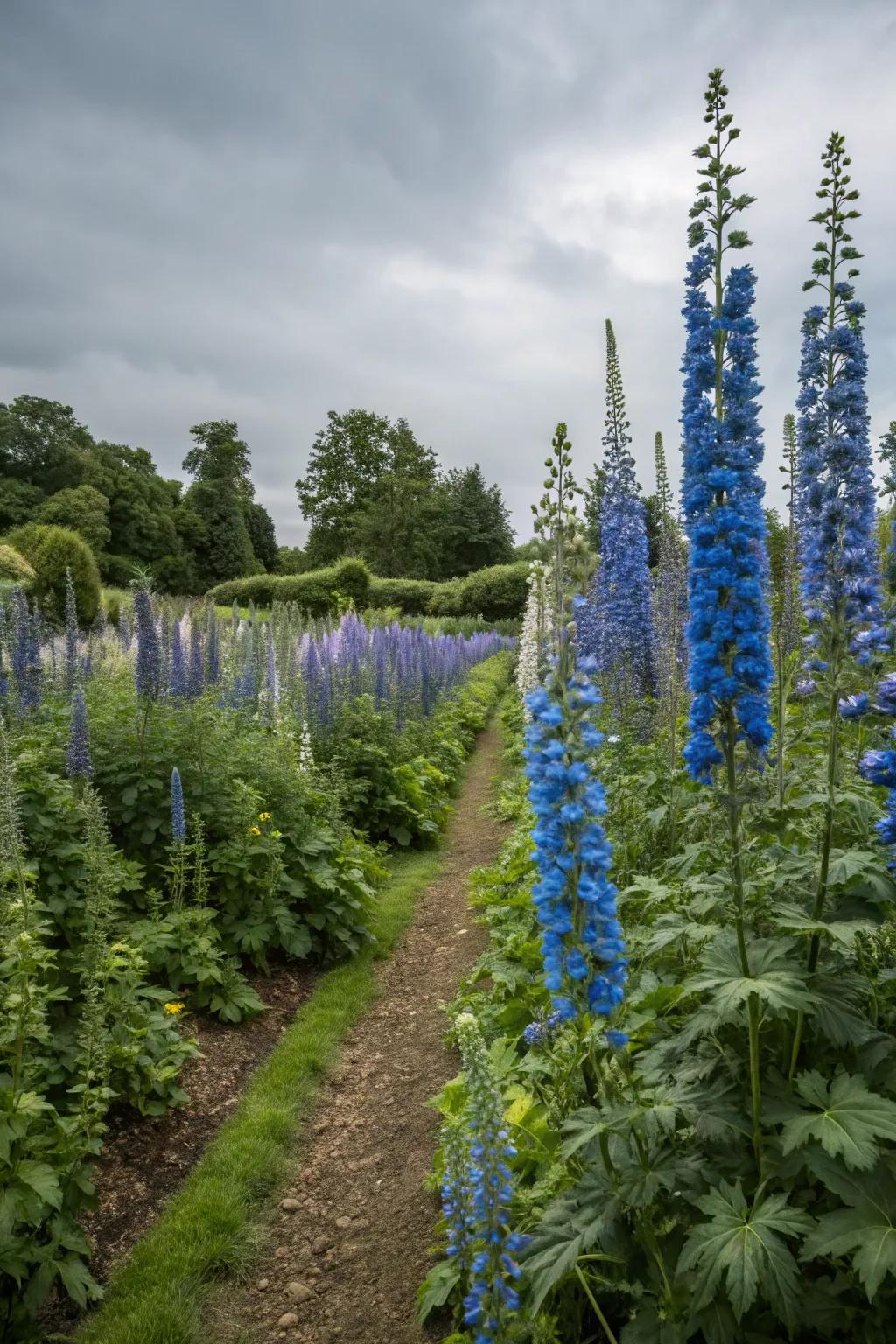
Elevate your design by mixing plant heights. Tall delphiniums paired with low-lying ground covers create dynamic visual layers.
Maybe worth checking out:
- Tall Delphinium Seeds: Cultivate stunning heights in your garden with these vibrant tall delphinium seeds.
- Ground Cover Flower Seeds: Enhance visual layers with low-lying ground cover seeds for a lush, colorful garden bed.
- Adjustable Garden Plant Stands: Support your tall flowers with adjustable stands for perfect vertical arrangement.
14. Colorful Plant Arrangements
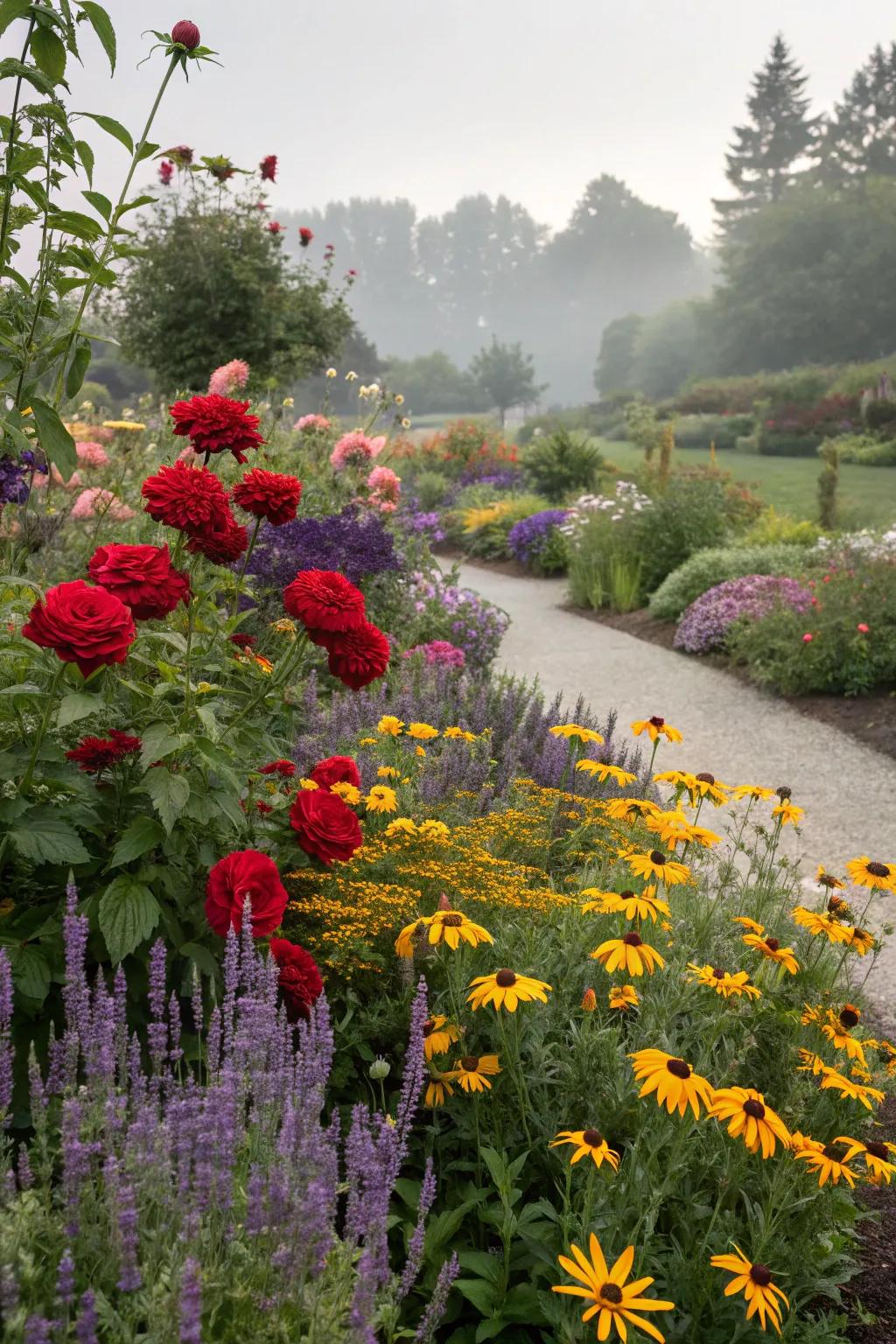
Start by crafting a colorful plant arrangement that catches the eye. I love mixing bold reds with gentle purples; it’s like Mother Nature’s fireworks!
You might like:
- Perennial Flower Seed Mix: Transform your garden with vibrant reds and purples. Plant diverse perennials for lasting beauty.
- High-Quality Garden Soil: Boost your plants’ growth with nutrient-rich garden soil. Enhance color and vigor effortlessly.
- Automatic Drip Irrigation Kit: Ensure vibrant blooms with an easy-to-install irrigation system. Keep your garden thriving.
15. Space Utilization

Think creatively about space utilization. Even a small corner can become a lush paradise with clever layering and vertical gardening.
Products that could assist:
- Stackable Vertical Garden Planters: Maximize your gardening space with stackable planters, perfect for small corners and tight areas.
- Wall-mounted Trellis: Transform walls into green spaces with a trellis, ideal for climbing plants and flowers.
- Self-watering Plant Containers: Keep your plants healthy with self-watering containers, reducing maintenance and ensuring constant hydration.
16. Sustainable Practices
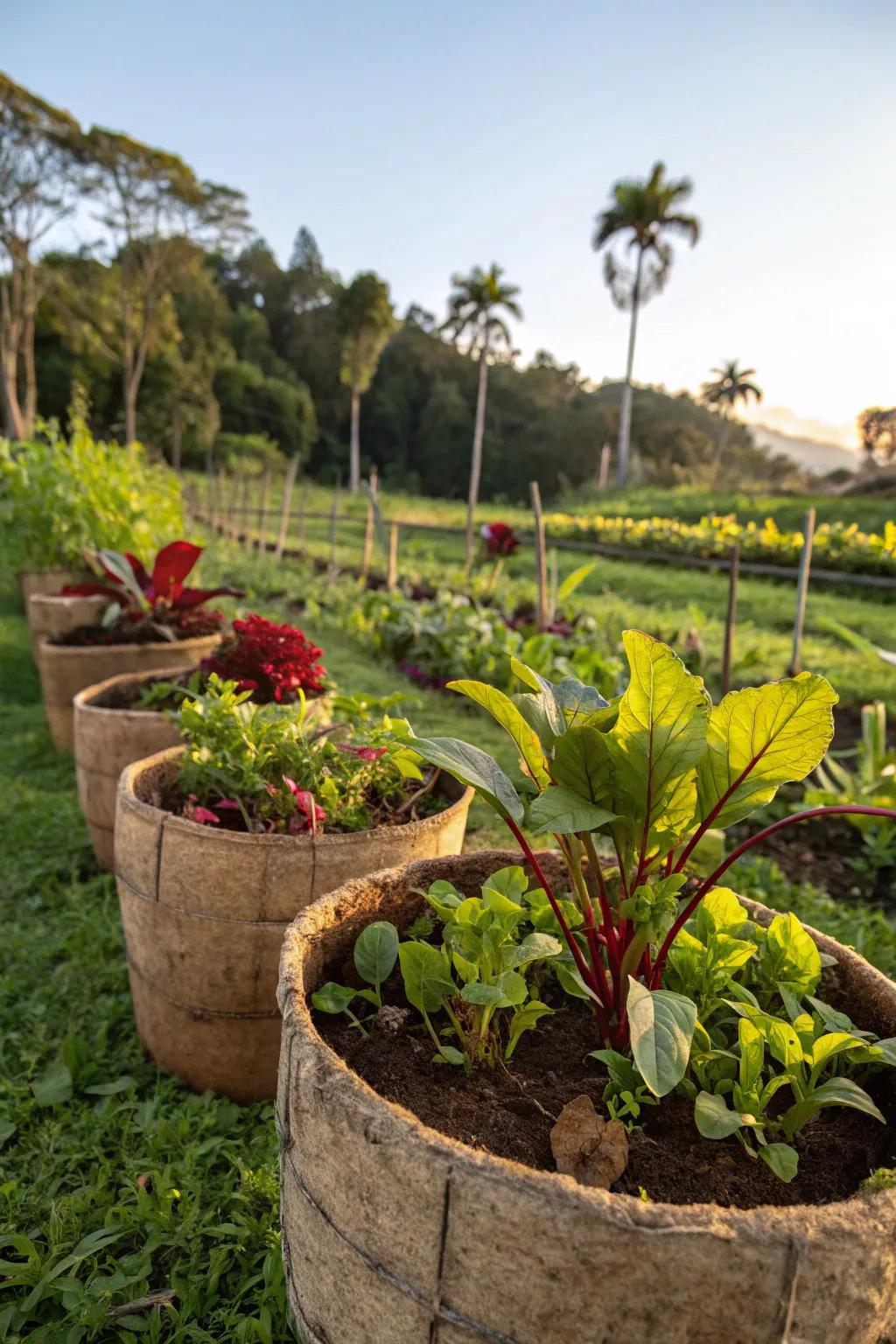
Embrace sustainable practices by using biodegradable pots. They integrate seamlessly into the soil, nurturing robust root systems.
Some handy options:
- Biodegradable Plant Pots: Enhance your garden by using biodegradable pots, promoting healthier root growth and sustainability.
- Organic Potting Soil: Opt for organic potting soil to enrich your plants naturally and improve soil health.
- Eco-friendly Mulch: Choose eco-friendly mulch to conserve moisture and support sustainable gardening practices.
17. Design Plans and Schematics

Sketch out design plans before planting; it’s the secret sauce to a well-organized garden. Trust me, a little planning goes a long way in creating a dreamy oasis.
May just do the trick:
- Garden Planning Journal: Organize your ideas efficiently—grab a garden planning journal for a structured approach.
- Landscape Design Software: Elevate your garden design with landscape software—visualize and plan easily.
- Garden Design Template Set: Create precise designs—use garden design templates for effortless planning.
